Today’s Current Affairs: 26th May 2025 for UPSC IAS exams, State PSC exams, SSC CGL, State SSC, RRB, Railways, Banking Exam & IBPS, etc
Table of Contents
China is set to launch its Tianwen-2 mission:
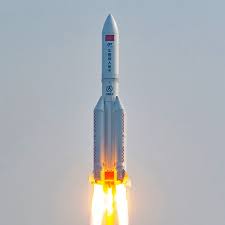
China is set to launch its Tianwen-2 mission, which aims to survey and sample the near-Earth asteroid 469219 Kamo‘oalewa.
- Tianwen-2 Mission launch Vehicle : Long March 3B rocket.
- Launch Site: Xichang Satellite Launch Centre, Sichuan Province, China.
- Agency: China National Space Administration (CNSA).
- Objective is Survey and sample asteroid Kamo’oalewa, then travel to the asteroid belt to study comet 311P/PANSTARRS.
- Kamo‘oalewa is a near-Earth asteroid discovered in 2016 by the Pan-STARRS 1 telescope on Haleakalā, Hawaii.
- It belongs to a rare class called quasi-satellites of Earth, which orbit the Sun, but remain gravitationally influenced by Earth due to their close proximity.
- It follows a highly elliptical solar orbit and appears to alternate between leading and trailing Earth, giving the illusion of orbiting Earth.
- Kamo‘oalewa has been in its current orbit for ~100 years, and is expected to stay for another 300 years, though quasi-satellite orbits are inherently unstable over long timescales.
- Tianwen-2 will use the “touch-and-go” technique to collect samples a method also used by NASA’s OSIRIS-Rex and Japan’s Hayabusa2
- In this method, the spacecraft briefly hovers over the asteroid’s surface, where a robotic arm releases a projectile or gas burst to dislodge particles, which are captured in a chamber.
- A backup “anchor-and-attach” method may be used, where four robotic arms drill into the surface to retrieve subsurface material.
Great Indian Bustard : In News
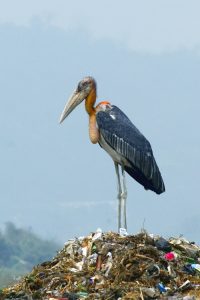
Radheshyam Pemani Bishnoi, a 28-year-old wildlife conservationist from Jaisalmer, Rajasthan, died in a road accident while on an anti-poaching patrol. He was a flag bearer in the GIB Community Conservation Programme.
- The Great Indian Bustard (Ardeotis nigriceps) is a large terrestrial bird endemic to the Indian subcontinent.
- The bird is primarily found in dry grasslands and scrublands, which are rapidly declining due to agricultural expansion and development.
- Its core population (~100 individuals) survives in the Thar Desert, mainly in Jaisalmer and Barmer districts of Rajasthan.
- The total population is critically low, estimated to be around 100–150 individuals across India.
- Conservation Status
- IUCN Red List: Critically Endangered
- Wildlife (Protection) Act, 1972: Schedule I species (highest level of protection under Indian law)
- CITES: Appendix I, indicating it is threatened with extinction and international trade is strictly regulated.
10th Governing Council Meeting of NITI Aayog:
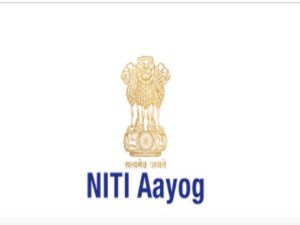
The 10th Governing Council Meeting of NITI Aayog was recently held in New Delhi, chaired by the Prime Minister, under the theme “Viksit Rajya for Viksit Bharat@2047”.
- NITI Aayog is the premier policy think-tank of the Government of India, established through a Union Cabinet resolution in January 2015, replacing the erstwhile Planning Commission.
- It is neither a Constitutional body nor a statutory body, as it has been created by an executive decision, not through legislation or constitutional amendment.
- NITI Aayog has a twin mandate:
- To oversee the adoption, implementation, and monitoring of the Sustainable Development Goals (SDGs) across the country.
- To promote both competitive and cooperative federalism by enhancing the involvement of States and Union Territories in the development process.
- The Chairperson of NITI Aayog is the Prime Minister of India.
- The Governing Council of NITI Aayog includes:
- The Prime Minister as its head,
- The Chief Ministers of all States and UTs with legislatures,
- Lieutenant Governors of other UTs,
- A maximum of four Union Ministers as ex-officio members, nominated by the Prime Minister,
- The Vice-Chairperson, appointed by the Prime Minister,
- Full-time Members of NITI Aayog,
- Special Invitees (domain experts and specialists) nominated by the Prime Minister.
Debt Recovery Tribunals:
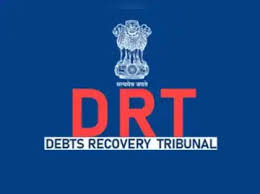
The Department of Financial Services (DFS) under the Ministry of Finance organised a colloquium recently at New Delhi, bringing together Chairpersons of Debt Recovery Appellate Tribunals (DRATs) and Presiding Officers of Debt Recovery Tribunals (DRTs).
- Debt Recovery Tribunals (DRTs) are quasi-judicial bodies established under the Recovery of Debts Due to Banks and Financial Institutions Act, 1993.
- Their primary role is adjudicating debt recovery disputes related to banks and financial institutions.
- DRTs handle loan default cases above ₹20 lakh, focusing on secured debts.
- DRTs also hear Securitisation Applications (SAs) filed under the SARFAESI Act, 2002 by borrowers or aggrieved parties.
- There are currently 39 DRTs functioning across India, each headed by a Presiding Officer.
- A DRT is presided over by a judicial officer qualified to be a District Judge.
- It can also have administrative and technical members appointed by the Central Government.
- Under Section 22(2) of the Recovery of Debts Act, DRTs have powers to:
- Summon and examine witnesses,
- Compel the production of documents,
- Receive evidence on affidavits,
- Review or dismiss applications,
- Conduct ex parte proceedings,
- Issue commissions for document and witness examination.
- Each DRT has a territorial jurisdiction defined by the Central Government.
- Jurisdiction is limited to cases involving debt recovery by banks and financial institutions.
- Debt Recovery Appellate Tribunals (DRATs) are the appellate authorities for decisions made by DRTs.
- Appeals can be filed by aggrieved parties seeking review of DRT rulings.
- Currently, 5 DRATs are functioning in India, each headed by a Chairperson.
- DRATs ensure judicial oversight and uniformity in debt recovery matters and promote legal clarity on complex recovery disputes.
Orans : Supreme Court’s direction

Rajasthan has initiated the process for classifying the community-protected ‘Oran’ lands as forests in compliance with the Supreme Court’s direction.
- Orans are traditional sacred groves found in Rajasthan.
- They are patches of forests dedicated by villagers to different deities as a socio-religious tradition and managed by the rural communities.
- Orans serve as centers of socio-religious activity for local communities. Festivals and fairs are held annually, often on specific dates, to honor these sacred places.
- Rajasthan is home to about 25,000 ‘Oran’ lands covering an area of 6 lakh hectares.
- ‘Oran’ land is used by local communities for grazing, forest products, natural water filtration, and for livelihood opportunities to promote the livestock economy.
- Water bodies within the orans, such as Talab (pond), Nadi (small pond), open wells, and streams, are crucial water resources for livestock and wildlife.
- In the Thar Desert, some orans have ancient goverdhan/shilalekh (petrograph) near water bodies.
- The area covered by an oran can range from a few hectares to several hundred hectares. For example, the Bhadariya Mata Oran in Jaisalmer district spans 17,821 hectares.
- Orans also form the natural habitat for India’s most critically endangered bird, the Great Indian Bustard (GIB), a protected species under the Wildlife Protection Act, which is also the State bird of Rajasthan.
- The State’s forest policy of 2023 gave the status of general community land to ‘Orans’, which was considered insufficient for their conservation as well as protection against encroachment and degradation.
- The Supreme Court recognised ‘Oran’ lands as forests under the Forest Conservation Act, 1980, in a landmark judgment delivered on December 18, 2024.
COVID-19 variant NB.1.8.1:
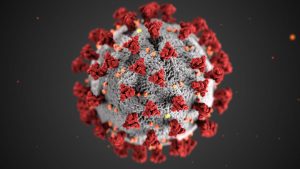
One case of the newly emerging COVID-19 variant NB.1.8.1 and four instances of the LF.7 type have been detected in India, according to Indian SARS-CoV-2 Genomics Consortium (INSACOG) data.
- INSACOG was established by the Government of India in December 2020.
- It was jointly initiated by the Union Ministry of Health, and the Department of Biotechnology (DBT) with the Council for Scientific & Industrial Research (CSIR) and the Indian Council of Medical Research (ICMR).
- It is a consortium of 54 laboratories to monitor the genomic variations in the SARS-CoV-2 by a sentinel sequencing effort which is facilitated by the National Centre for Disease Control (NCDC), Delhi, involving the Central Surveillance Unit (CSU) under the Integrated Disease Surveillance Programme (IDSP).
- The mandate of INSACOG has evolved with time, and the focus has shifted from primarily tracking variants among international passengers to early detection of variants that may emerge within the country.
- It has the following objectives:
- Early detection of genomic variants of public health implication through sentinel surveillance.
- To determine the genomic variants in unusual events/trends (vaccine breakthroughs, superspreader events, high mortality/morbidity trend areas, etc.)
- To correlate the genome surveillance data with epidemiological data.
- To suggest public health actions based on the analysis of genomic and epidemiological surveillance data.
- The data from the genome sequencing laboratories is being analysed as per the field data trends to study the linkages, if any, between the genomic variants and epidemiological trends.
- This helps to understand superspreader events and outbreaks and strengthen public health interventions across the country to help in breaking the chains of transmission.
New Development Bank: Algeria Joined
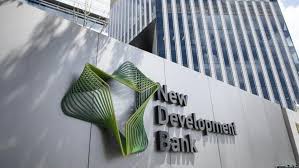
Algeria has officially joined the BRICS-backed New Development Bank (NDB), marking a major expansion of the bank’s influence into North Africa.
- The New Development Bank (NDB), formerly known as the BRICS Development Bank, is a multilateral development bank operated by the BRICS states (Brazil, Russia, India, China, and South Africa).
- NDB aims to mobilize resources for infrastructure and sustainable development projects in BRICS countries and other emerging economies and developing countries.
- The idea of setting up NDB was first conceived in 2012 during the BRICS Summit in New Delhi, India.
- The agreement for establishing the NDB was signed during the BRICS Summit held in Fortaleza on July 15, 2014, and the Bank started operations on July 21, 2015.
- The bank is headquartered in Shanghai, China, with regional offices in South Africa and Brazil.
- Membership in NDB is open to any member of the United Nations.
- The NDB has an initial authorized capital of USD 100 billion and an initial subscribed capital of USD 50 billion, which was equally distributed among the five founding members.
- Unlike in the case of the World Bank or ADB, each member in the NDB has an equal voting power.
- The Bank is governed by a Board of Governors made up of the finance ministers of the five BRICS countries, and a Board of Directors.
- Both the presidency and vice-presidency of the NDB are rotated among BRICS founding members: Brazil, Russia, India, China, and South Africa.
Schistura densiclava:
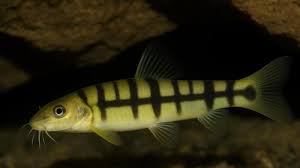
A team from Gauhati University’s Department of Zoology recorded a new species of troglophilic loach, Schistura densiclava, in Meghalaya recently.
- It is a new species of cave-dwelling fish.
- The fish was found in Krem Mawjymbuina, a limestone cave near Mawjymbuin village in the East Khasi Hills district of Meghalaya, a region known for its complex limestone cave systems.
- Schistura densiclava was found deep inside Krem Mawjymbuin.
- Surrounded by dense forest and accessible only seasonally, the cave remains untouched by tourism or human activity, preserving its pristine condition.
- This discovery raises the number of known cave-associated fish in Meghalaya to six.
- Unlike many cave-adapted fish that lose their eyesight and pigmentation over generations of isolation, Schistura densiclava retains fully functional eyes and distinct body coloration.
- This suggests the species is a troglophile — a type of organism that can live both in cave environments and outside.
- It belongs to the loach family (Nemacheilidae) and is adapted to life in the cool, low-light conditions of the cave’s underground stream.
- It displays a striking pattern of 14–20 black bars across a pale yellow-green body and a thick black stripe at the base of its dorsal fin — a feature that inspired its name, “densiclava,” which means “thick stripe” in Latin.
- The fish also shows clear differences between males and females.
- Males tend to have slimmer bodies, irregular markings on their flanks, and slightly puffier cheeks.
- Females are generally plumper, with more regular body markings.
Nagshankar Temple:
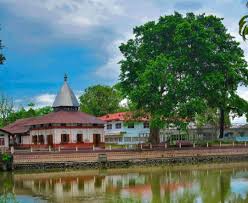
Nagshankar, in northeastern Assam’s Biswanath district, has been designated a model temple for turtle conservation.
- It is an ancient Hindu shrine dedicated to Lord Shiva.
- It is situated on the north bank of the river Brahmaputra within the administrative district of Biswanath in Assam.
- It is said to have been built by King Narasankar of Nagakha in the 4th century AD.
- Later on it was repaired by Ahom king Su-sen-pha in 1480.
- The temple premises feature a large pond, which houses 250-300 of the world’s rarest species of turtles.
- Among the species, black softshell, Indian softshell, and Malayan softshell are found.
- Some of these turtles are even believed to be hundreds of years old.
- Its campus also has animals like peacocks, deer, and pythons.
World Hydrogen Summit 2025:

At the World Hydrogen Summit 2025 in Rotterdam, Netherlands, the Ministry of New & Renewable Energy outlined India’s initiatives to emerge as a global hub for green hydrogen production.
- Green hydrogen is produced by splitting water into hydrogen (H₂) and oxygen (O₂) through electrolysis powered by renewable energy sources like solar power, or via biomass gasification.
- Its use include fuel cell electric vehicles (FCEVs), industrial uses such as fertilizers and refineries sector, and transportation sectors like road and rail.
- Hydrogen is the lightest and most abundant element in the universe. It is a colorless, odorless, and highly flammable gas at room temperature.
- They are crucial for India’s energy independence (reduces reliance on fossil fuel imports), offering a stable, local energy source from renewables.
- Production from waste biomass also creates additional income for farmers and local communities.
Sagar Mein Samman Initiative:

The Government of India launched the Sagar Mein Samman (SMS) initiative during the International Day for Women in Maritime, to train more women as seafarers, and to power India’s goal of a Global Maritime Powerhouse.
- The International Day for Women in Maritime, observed annually on 18th May by the International Maritime Organisation’s (IMO), promotes gender balance and inclusive growth in the maritime sector.
- Theme 2025: “An Ocean of Opportunities for Women.”
- Sagar Mein Samman aims to build a gender-equitable maritime workforce by promoting women’s inclusion, safety, skill development, leadership, and equal opportunities across maritime operations.
- It is aligned with the IMO mission for gender inclusion and broader vision of the UN SDG-5 (gender equality).
- It is also aligned with India’s Diversity, Equity, and Inclusion (DEI) agenda and Maritime India Vision 2030,, it covers planning, training, research, governance, and outreach.
- India witnessed a 649% rise in women seafarers, from 341 in 2014 to 2,557 in 2024, and nearly 3,000 women received financial assistance.
- The initiative sets a target of 12% female representation in technical maritime roles by 2030.
World Bee Day 2025:

The Khadi and Village Industries Commission (KVIC) celebrated World Bee Day 2025 with the theme “Bee inspired by nature to nourish us all,” highlighting the transformative impact of the Honey Mission.
- World Bee Day observed on 20th May, World Bee Day was established by the UN in 2018, to raise awareness of the critical role of bees and pollinators in maintaining ecosystem and human health.
- The Honey Mission, launched by KVIC in 2017-18 under the Ministry of Micro,Small & Medium Enterprises, promotes beekeeping to generate self-employment in rural and remote areas.
- Beneficiaries receive bee boxes, colonies, toolkits, and training. As of 2025 KVIC has distributed over 2.29 lakh bee boxes, leading to the production of 20,000 metric tonnes of honey and generating Rs 325 crore income for beekeepers.
- In FY 2024-25, honey exports under KVIC touched Rs 25 crore.
- The Scheme of Fund for Regeneration of Traditional Industries (SFURTI) and the National Beekeeping & Honey Mission (NBHM) support traditional beekeepers by forming clusters and providing training and modern machinery for sustainable employment.
- NBHM aims to achieve the goal of ‘Sweet Revolution’ as part of Atmanirbhar Bharat Abhiyaan.
Weather Balloons:
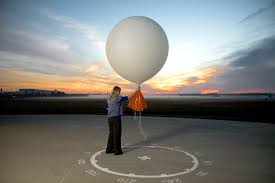
The US has reduced its weather balloon launches following budget cuts by the administration, causing concerns globally among meteorologists about the impact on weather forecasting accuracy.
- Léon Teisserenc de Bort, a French meteorologist, pioneered weather balloon use in 1896 and discovered the tropopause and stratosphere.
- Weather balloons are large latex balloons filled with helium or hydrogen, used by meteorologists to study the upper atmosphere (above 5,000 feet).
- Modern weather balloons can rise up to 1,15,000 feet (35 km) in about 2 hours.
- They carry a radiosonde, a small battery-powered radio-transmitter suspended about 66 feet below, which collects and transmits real-time data on temperature, pressure, humidity, and wind to ground stations via radio signals.
- High-tech radiosondes are lighter, more energy-efficient, and use Global Positioning System (GPS) for accurate tracking and wind measurement, though they are still launched using weather balloons.
- Helps fill the gap between surface observations and satellite data, offering detailed vertical profiles of the atmosphere essential for accurate weather prediction.
- The National Balloon Facility (NBF), Hyderabad, was established in the 1960s as a collaborative initiative between the Tata Institute of Fundamental Research (TIFR) and the ISRO to enable high-altitude scientific balloon launches for atmospheric and space research.
- The India Meteorological Department (IMD) and over 900 global weather stations launch balloons twice daily to maintain forecasting accuracy.
Energy and Climate Change Report:
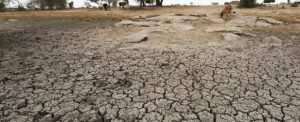
A joint analysis by CEEW and AEEE, published in Energy and Climate Change, reveals that India is on track to surpass its 2030 climate target of reducing emissions intensity by 45% from 2005 levels.
- Energy and Climate Change Report Published by: Council on Energy, Environment and Water (CEEW) and Alliance for an Energy Efficient Economy (AEEE).
- Key Findings on India:
- India could achieve 48–57% reduction in emissions intensity by 2030 vs. 2005 levels.
- Behavioural changes under Mission LiFE could reduce emissions by up to 10% by 2050.
- Non-fossil fuel share in power capacity could reach 60–68% by 2035.
- Carbon pricing, tariff reforms, and clean tech investments are essential for India’s 2070 net-zero goal.
- High growth may raise total emissions but maintain declining emissions intensity due to efficiency and renewable.
Mallakhamb : Showcased At The Khelo India Beach Games 2025

Mallakhamb was showcased at the Khelo India Beach Games 2025 in Diu, marking the first time the traditional sport was held on a beach setting.
- Mallakhamb (literally meaning wrestling pole) is an ancient Indian sport where athletes perform aerial yoga and gymnastic postures on a vertical wooden pole or rope.
- Originally designed as a training aid for wrestlers and warriors to improve agility, strength, flexibility, and martial readiness.
- Traces of mallakhamb date back to Chandraketugarh pottery (1st–2nd century BCE) and epics like the Ramayana.
- Manasollasa (12th century) by King Someshvara III contains the earliest literary mention.
- Revived in the 18th century by Balambhatta Dada Deodhar, trainer to Peshwa Bajirao II.
- Practised by figures like Rani Lakshmibai and Tantia Tope.




